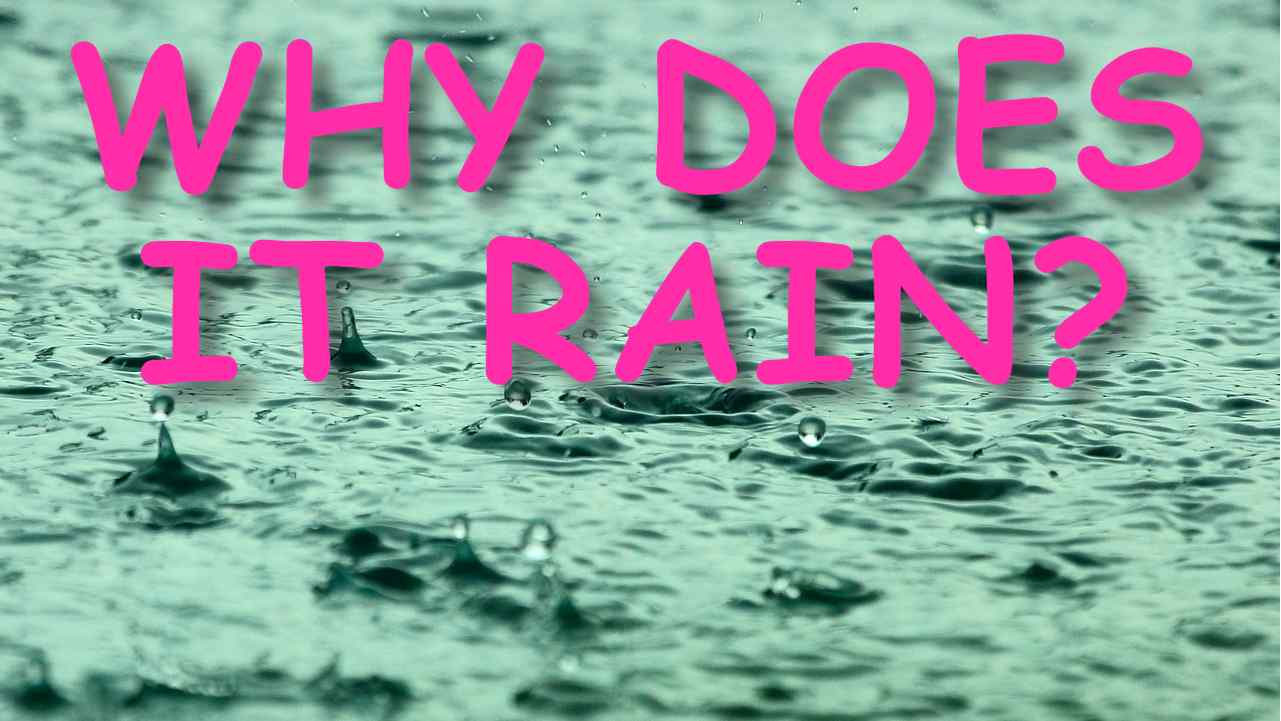Table of Contents
Intro Why Does It Rain?
Rain is an essential part of life on Earth, but why does it happen? In this article, we will explore the causes behind rainfall and discuss why it is so important for our planet. We will look at the different types of precipitation that result from changes in temperature and pressure, as well as how they impact us. Additionally, we will discuss the role of other factors such as wind and geography in determining the location, amount and intensity of rainfall.

Rain's Mystery
Rain is one of the most fascinating natural phenomena that have puzzled scientists for centuries. Despite our advances in technology and meteorological studies, there is still much we don't know about rain's mystery. One of the biggest questions regarding rain is why it happens at all. We know that water evaporates from the earth's surface due to heat, but what causes this moisture to condense and fall back down as rain?
One theory suggests that certain atmospheric conditions cause water vapor to rise into colder regions of the atmosphere where it condenses into clouds. As these clouds become heavier with moisture, they eventually release their contents in the form of precipitation. However, this explanation doesn't account for why some areas receive more rainfall than others or why some parts of a region experience drought while others are drenched.
Another factor contributing to rain's mystery is its role in shaping our planet's climate and weather patterns. Rainfall affects everything from agriculture and food production to natural disasters like floods and landslides. Understanding how rain works can help us predict weather patterns more accurately, mitigate risks associated with extreme weather events, and develop sustainable solutions for managing water resources in areas prone to drought or flooding.
In conclusion, although we have come a long way in understanding rain's mysteries over time through scientific researches and empirical data collected over years; There remains so much more we need to learn about this fascinating natural phenomenon that shapes our world every day.

What is Water Cycle?
Water cycle, also known as the hydrologic cycle, is the process of how water moves in a continuous loop between the atmosphere, land and sea. The water cycle consists of four main stages: evaporation, condensation, precipitation and collection. Water evaporates from bodies of water and land surfaces due to heat from the sun. This forms water vapor which rises up into the atmosphere.
As it gets higher in altitude, it cools down and condenses into clouds through a process called condensation. When these clouds become too heavy with moisture they fall back to Earth as precipitation. Precipitation can come in different forms such as rain, snow or hail depending on atmospheric conditions like temperature.
Rain is an important part of this cycle because it replenishes our sources of freshwater that we use for drinking, agriculture and other activities. Without rainwater there would be no water for plants to grow or rivers to flow which would have devastating consequences for all living creatures on Earth.
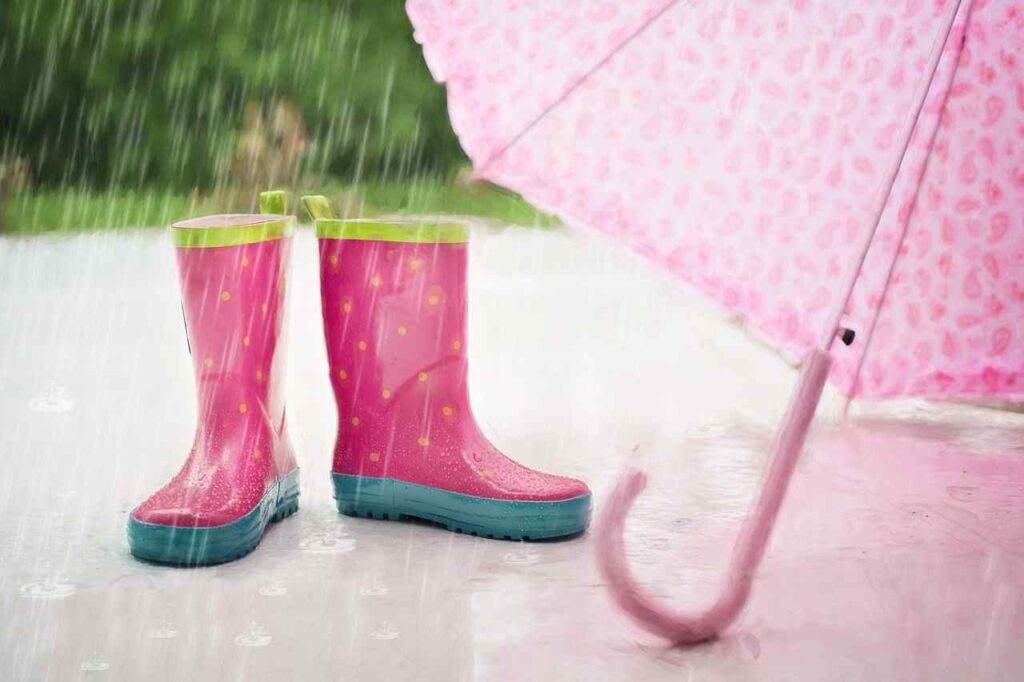
How Clouds Form
Clouds form when water vapor in the air condenses into tiny liquid droplets or ice crystals. This process occurs as warm, moist air rises and cools, causing the water vapor to lose energy and change from a gas to a liquid or solid form. As temperature drops, the air can no longer hold all of its moisture in the form of invisible water vapor. Instead, it condenses into visible cloud formations.
Once clouds have formed, they may continue to grow and become denser as more water vapor is added through processes such as evaporation from bodies of water or transpiration from plants. When these clouds become heavy enough, they release their moisture back down to Earth in the form of precipitation – rain, snow, sleet or hail – thus completing the cycle that starts with evaporation.
Overall, understanding how clouds form is an essential part of comprehending weather patterns and predicting future atmospheric conditions. By studying cloud formation and precipitation patterns with new technologies like satellite data analysis and machine learning algorithms, scientists are gaining insights into weather phenomena that can help us better prepare for severe storms or other extreme weather events.
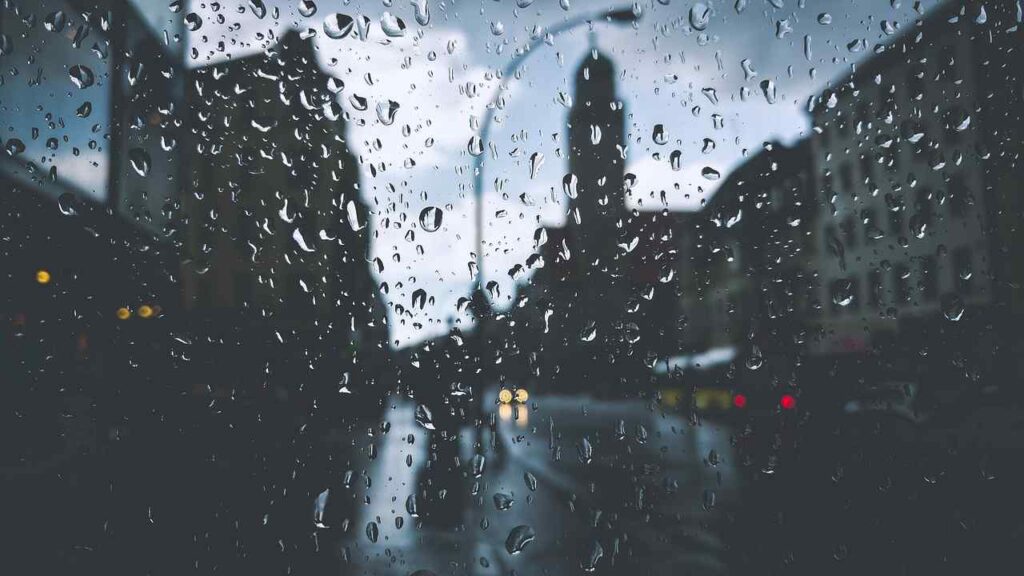
What Makes Raindrops?
Rain is the result of a natural process that occurs when water vapor in the atmosphere condenses into liquid droplets. This happens when warm, moist air rises and cools, causing the vapor to lose its energy and gather together to form clouds. When these clouds become too heavy with moisture, they release raindrops onto the earth below.
There are several factors that can contribute to rain formation, including temperature, humidity, and pressure changes. Warm air is able to hold more moisture than cold air, so as it rises and cools down in the upper atmosphere, this excess moisture condenses into clouds. Humidity also plays a role in rain formation; high levels of humidity mean there is more water vapor present in the air which can lead to heavier rainfall. Pressure changes can also trigger rainfall by causing air masses to rise or fall rapidly, leading to cloud formation or dissipation.
While rain may seem like an ordinary occurrence that we take for granted, it is actually a complex process that depends on various factors working together in order for it to occur. Understanding these processes can help us appreciate the importance of weather patterns and how they impact our daily lives.
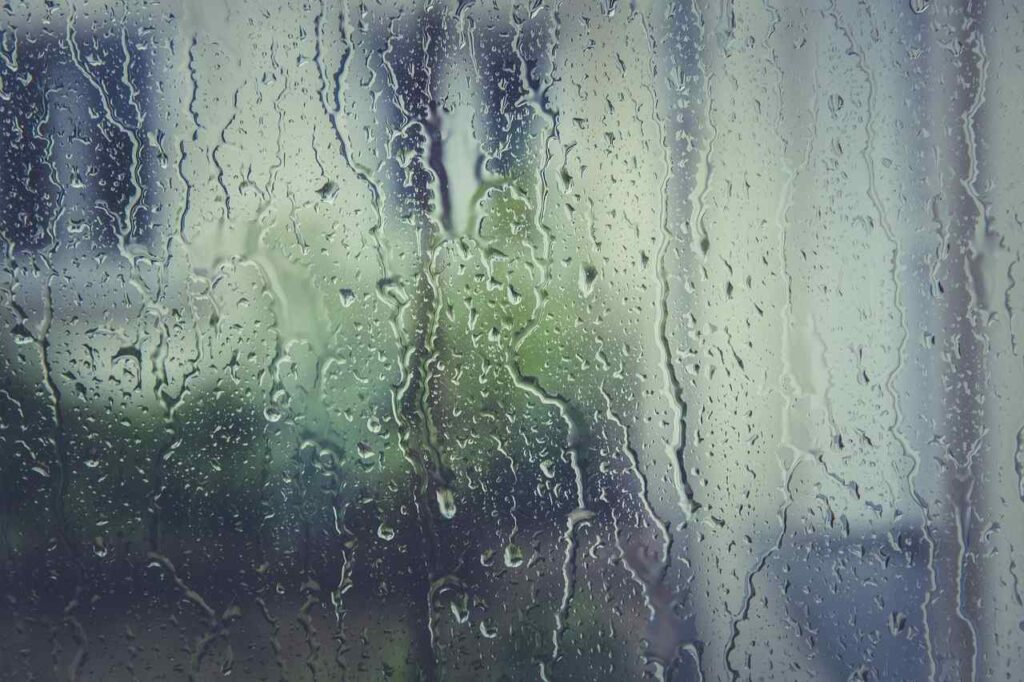
Temperature & Humidity Condensed Water Vapour Rises
Temperature and humidity play a crucial role in the formation of rain. When warm air rises, it cools down, causing water vapor to condense into tiny droplets. The amount of water vapor that can be held by the air depends on its temperature and pressure, which is known as relative humidity. When the relative humidity reaches 100%, the air becomes saturated with moisture, and any additional moisture will result in precipitation.
The ideal conditions for rainfall are high levels of moisture in the atmosphere combined with rapidly rising warm air. Areas that experience high temperatures and humidity, such as tropical rainforests or coastal regions, tend to have more frequent rainfall than drier regions with lower humidity levels.
In addition to temperature and humidity, other factors such as wind patterns and atmospheric pressure also influence rainfall patterns. Understanding these weather conditions is essential for predicting and mitigating natural disasters like floods or droughts caused by changes in temperature and humidity levels over time.
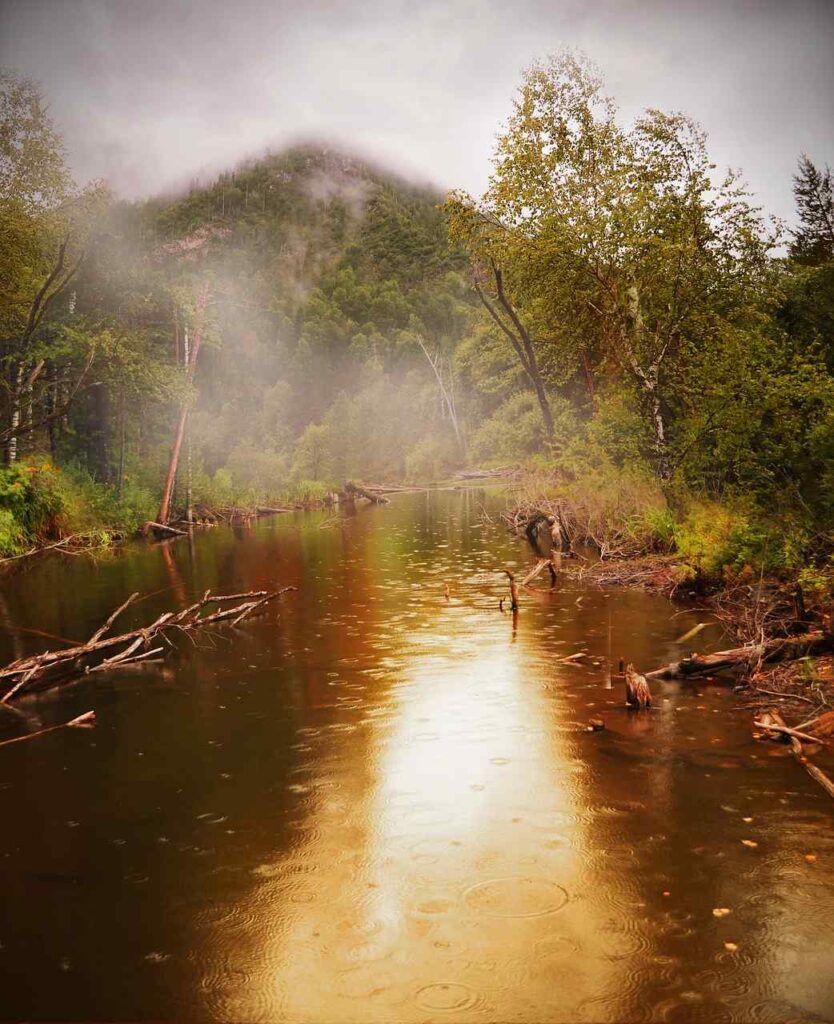
Different Types Of Precipitation That Result From Changes In Temperature And Pressure
The precipitation that results from changes in temperature and pressure can take various forms. Rain is one of the most common types of precipitation and forms when water droplets in the sky combine to create larger drops that eventually fall to the ground. Snow is another common type that forms when the temperature is below freezing and the water droplets in the sky freeze before they fall.
Sleet is a mix of rain and snow that usually forms in the winter when the temperature at the surface is below freezing but warmer aloft. Hail is a type of precipitation that forms when strong updrafts in a thunderstorm carry raindrops high into the sky where they freeze into small balls of ice.
Finally, a less common type of precipitation is called virga, which is when precipitation falls from the clouds but evaporates before it hits the ground. Precipitation plays a crucial role in the water cycle, providing the moisture that sustains life on earth. In areas where precipitation is scarce, such as deserts, rain is especially valuable. Understanding how and why precipitation forms is an essential part of predicting weather patterns and studying how these patterns impact ecosystems and human societies.

Types of Rainfall
There are four main types of rainfall: convectional, orographic, frontal, and cyclonic. Convectional rainfall occurs when the sun heats the ground, causing warm air to rise and cool. As it cools, water condenses into clouds and falls as rain. This type of rainfall is common in tropical regions with high temperatures.
Orographic rainfall occurs when moist air rises over a mountain range and cools, resulting in precipitation on the windward side of the mountain. The leeward side experiences drier conditions due to a phenomenon called a rain shadow.
Frontal rainfall happens when two air masses collide; one warm and one cold. The warm air rises over the colder air mass resulting in clouds that produce precipitation.
Finally, cyclonic (or tropical) rainfall is typically associated with low-pressure systems such as hurricanes or typhoons. These storms can generate large amounts of rainfall due to their size and intensity.
Overall, understanding the different types of rainfall is essential for meteorologists to accurately predict weather patterns around the world. By knowing what causes each type of precipitation event we can better prepare for potential hazards such as floods or droughts caused by extreme weather events.
Conclusion: Understanding the Phenomenon
In conclusion, understanding the phenomenon of rain requires a combination of knowledge in various fields. From meteorology to atmospheric science, understanding how precipitation occurs involves a deep dive into the world of weather patterns and natural phenomena. Rain is caused by the process of water evaporating from oceans, lakes and other bodies of water, rising up into the atmosphere and then falling back down as precipitation.
While we have made great strides in recent years in predicting when and where rain may fall, there is still much we don't know about this natural occurrence. Scientists continue to research factors such as cloud formation, wind direction and temperature changes that can impact when and where rain will occur. As we gain more insight into these processes, our ability to accurately predict rainfall will improve – helping us better prepare for both potential floods and droughts.
Overall, understanding why it rains is an important part of comprehending our world's intricate natural systems. By continuing to study this phenomenon through ongoing research efforts across many disciplines, we can not only improve our predictive abilities but also learn more about how our planet functions as a whole.
Related Articles
Met Office Why Does It Rain?
JK Geograpy Why Does It Rain?
https://www.jkgeography.com/why-does-it-rain.html
Wonderopolis Why Does It Rain?
https://wonderopolis.org/wonder/Why-Does-It-Rain
3D Geography Why Does It Rain?
https://www.3dgeography.co.uk/why-does-it-rain
Quora Why Does It Rain? Why Does Rain Fall?
https://www.quora.com/Why-does-rain-fall
Info Please So Why Does It Rain?
https://www.infoplease.com/math-science/weather/weather-so-why-does-it-rain
Universe Today Why Does It Rain?
https://www.universetoday.com/79797/why-does-it-rain1/
ZME Science Why Does It Rain?
https://www.zmescience.com/ecology/climate/rain-much-london-well-not-much-really/
Idea Columbia Why Does It Rain?
https://www.ldeo.columbia.edu/~kastens/curriculum/BRF/water/rain/RainText.html
The Hindu Why Does It Rain in Summer?
https://www.thehindu.com/sci-tech/science/why-does-it-rain-in-summer-sometimes/article18401513.ece
Discover Magazine Why Does It Rain?
https://www.discovermagazine.com/environment/why-does-it-rain-so-much-in-spring
Dutch Review Why Does It Rain?
https://dutchreview.com/expat/why-does-it-rain-so-much-in-the-netherlands/
Nerd Momma Why Is Biodiversity Important?
https://nerdmomma.com/why-is-biodiversity-important-report-no2/#more-2730
Ner Momma Why Does Lightning Strike?
https://nerdmomma.com/why-does-lightning-strike-what-causes-thunder-and-lightning/#more-2113
